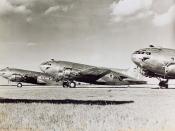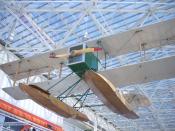The industry of the Boeing was the Aircraft Industry. Commercial aircraft manufacturing was an industry of enormous risks where failure was the norm, no the exception. During 1980's, the number of large commercial jet makers had been reduced into four namely Boeing, McDonnell Douglas, Airbus and Lockheed. In late 1990's, the four commercial jet makers had been reduced into two which are Boeing and Airbus. The main reason why aircraft manufacturers so often failed was because of the huge product development. For any commercial jet makers, it is necessary to have an up front investment of up to $15 billion, a lead time of 5 to 6 years from launch to first delivery, and the ability to sustain a negative cash flow throughout the development phase. Typically, to break even on an entirely new jetliner, aircraft manufacturers needed to sell a minimum of 300 to 400 planes and at least 50 planes per year.
Only a few commercial airplane programs had ever made money. In order to know how to price an aircraft it is reflected to the cost on the development of that aircraft. While new model prices were based on the average cost of producing 300 to 400 planes, not a single plane. Aircraft pricing embodied the principle of learning by doing, the so called " learning curve " workers steadily improved their skills during the assembly process, and as a result, labor cost fell as the number of planes produced rose. The high and increasing cost of product development prompted aircraft manufacturers to utilize subcontracting as a risk-sharing strategy. For the 747, the 767, and the 777, the Boeing Company required subcontractors performed detailed design work and assembled major subsections of the new planes while airframe integrators designed the aircraft, integrated its system and equipment, assembled the...


